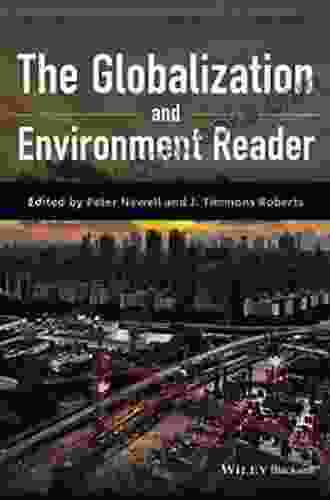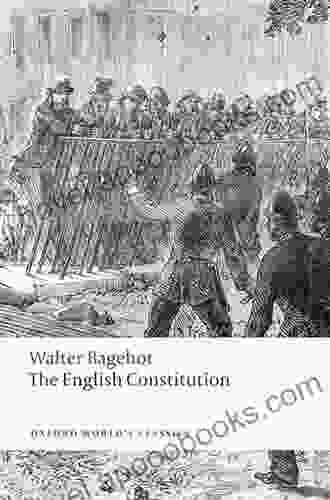Unveiling the Hidden History: The Devastating Impact of Racism on American Cities

For decades, American cities have been plagued by racial segregation, with vast disparities between white and minority neighborhoods. But the origins of this segregation have often been shrouded in mystery, obscured by a narrative that blames individual choices and ignores the role of systemic racism.
4.8 out of 5
| Language | : | English |
| File size | : | 25415 KB |
| Text-to-Speech | : | Enabled |
| Screen Reader | : | Supported |
| Enhanced typesetting | : | Enabled |
| X-Ray | : | Enabled |
| Word Wise | : | Enabled |
| Print length | : | 370 pages |
In his groundbreaking book, The Color of Law, Richard Rothstein meticulously documents how government policies have played a central role in creating and maintaining racial segregation in American cities. From the earliest days of the Republic, he argues, the federal government has engaged in a series of intentional and systemic policies that have disadvantaged black Americans and other minorities, leading to the creation of segregated neighborhoods and the devaluation of minority-owned property.
Rothstein's research reveals that this segregation was not a natural or inevitable outcome of market forces. Rather, it was the result of deliberate government policies, including:
- Redlining: The practice of denying mortgages and other financial services to residents of certain neighborhoods based on their race or ethnicity. This practice effectively prevented black Americans from purchasing homes in white neighborhoods, confining them to segregated and often impoverished areas.
- Restrictive covenants: Clauses in property deeds that prohibited the sale or rental of homes to black Americans. These covenants were widely used in the early 20th century to prevent black families from moving into white neighborhoods.
- Zoning laws: Regulations that restricted the use of land for certain purposes, such as housing or commercial development. These laws were often used to exclude black businesses and residents from white neighborhoods.
The impact of these policies has been devastating for black Americans and other minorities. Racial segregation has led to a host of social and economic problems, including:
- Increased poverty: Segregated neighborhoods tend to have higher rates of poverty than integrated neighborhoods. This is because they are often located in areas with fewer job opportunities and lower-quality schools.
- Limited educational opportunities: Segregated neighborhoods often have underfunded schools, which can lead to lower academic achievement for students of color.
- Increased crime: Segregated neighborhoods often have higher rates of crime than integrated neighborhoods. This is due to a number of factors, including poverty, lack of opportunity, and the presence of gangs.
- Health disparities: Segregated neighborhoods often have higher rates of health problems, such as asthma, heart disease, and diabetes. This is due to a number of factors, including air pollution, poor housing conditions, and lack of access to healthcare.
The Color of Law is a powerful and eye-opening book that reveals the hidden history of racial segregation in American cities. Rothstein's research provides irrefutable evidence of the systemic racism that has shaped our country's urban landscape. It is a must-read for anyone who wants to understand the challenges facing our cities today and to find solutions to the problems of poverty, inequality, and racial injustice.
4.8 out of 5
| Language | : | English |
| File size | : | 25415 KB |
| Text-to-Speech | : | Enabled |
| Screen Reader | : | Supported |
| Enhanced typesetting | : | Enabled |
| X-Ray | : | Enabled |
| Word Wise | : | Enabled |
| Print length | : | 370 pages |
Do you want to contribute by writing guest posts on this blog?
Please contact us and send us a resume of previous articles that you have written.
 Book
Book Novel
Novel Page
Page Chapter
Chapter Text
Text Story
Story Genre
Genre Reader
Reader Library
Library Paperback
Paperback E-book
E-book Magazine
Magazine Newspaper
Newspaper Paragraph
Paragraph Sentence
Sentence Bookmark
Bookmark Shelf
Shelf Glossary
Glossary Bibliography
Bibliography Foreword
Foreword Preface
Preface Synopsis
Synopsis Annotation
Annotation Footnote
Footnote Manuscript
Manuscript Scroll
Scroll Codex
Codex Tome
Tome Bestseller
Bestseller Classics
Classics Library card
Library card Narrative
Narrative Biography
Biography Autobiography
Autobiography Memoir
Memoir Reference
Reference Encyclopedia
Encyclopedia Penny Reid
Penny Reid Sever Bronny
Sever Bronny Phyllis E Davis
Phyllis E Davis Toni Adejumo
Toni Adejumo Paul Scott
Paul Scott Stephen Cottrell
Stephen Cottrell Noelle Rousseau
Noelle Rousseau Rashelle Workman
Rashelle Workman Octavia Randolph
Octavia Randolph Stephen Fox
Stephen Fox Tessa Arlen
Tessa Arlen Red Phoenix
Red Phoenix Yiyun Li
Yiyun Li Paul Blokker
Paul Blokker Teresa Wilms Montt
Teresa Wilms Montt Chris Bryant
Chris Bryant Richael Barger Anderson
Richael Barger Anderson Richard C Bush
Richard C Bush Will Adams
Will Adams Rachel Jones
Rachel Jones
Light bulbAdvertise smarter! Our strategic ad space ensures maximum exposure. Reserve your spot today!

 Arthur C. ClarkeThe Beatles For Ukulele Songbook: Your Gateway to the Fab Four's Timeless...
Arthur C. ClarkeThe Beatles For Ukulele Songbook: Your Gateway to the Fab Four's Timeless...
 Isaias BlairRecently Discovered Solos: Unveiling the Hidden Treasures of Saul Goodman's...
Isaias BlairRecently Discovered Solos: Unveiling the Hidden Treasures of Saul Goodman's...
 Ethan MitchellUnveiling the Enigmas of Academic Generals: William Johnstone's Masterpiece
Ethan MitchellUnveiling the Enigmas of Academic Generals: William Johnstone's Masterpiece Shane BlairFollow ·12.6k
Shane BlairFollow ·12.6k Dominic SimmonsFollow ·17.5k
Dominic SimmonsFollow ·17.5k Matthew WardFollow ·8.2k
Matthew WardFollow ·8.2k Ian McEwanFollow ·4.3k
Ian McEwanFollow ·4.3k George MartinFollow ·5k
George MartinFollow ·5k Herman MelvilleFollow ·7.9k
Herman MelvilleFollow ·7.9k Isaac MitchellFollow ·17.3k
Isaac MitchellFollow ·17.3k Edwin BlairFollow ·12.7k
Edwin BlairFollow ·12.7k

 Shaun Nelson
Shaun NelsonUnlocking the Intricate Nexus: The Globalization and the...
In an era marked by...

 Robin Powell
Robin PowellLast Summer at the Golden Hotel: A Captivating Journey of...
Synopsis: A Transformative Summer at...

 Gabriel Mistral
Gabriel MistralContracts And Conmen In Europe Scramble For Africa
The late 19th and early...

 Glenn Hayes
Glenn HayesThe Story of the United States' Longest Wildcat Strike: A...
Prologue: The...

 Evan Hayes
Evan HayesBritain Empire Resistance Repression And Revolt:...
: The Tapestry of...

 Eddie Bell
Eddie BellGreen's Operative Hand Surgery: The Ultimate Guide for...
Green's Operative Hand Surgery is the...
4.8 out of 5
| Language | : | English |
| File size | : | 25415 KB |
| Text-to-Speech | : | Enabled |
| Screen Reader | : | Supported |
| Enhanced typesetting | : | Enabled |
| X-Ray | : | Enabled |
| Word Wise | : | Enabled |
| Print length | : | 370 pages |






